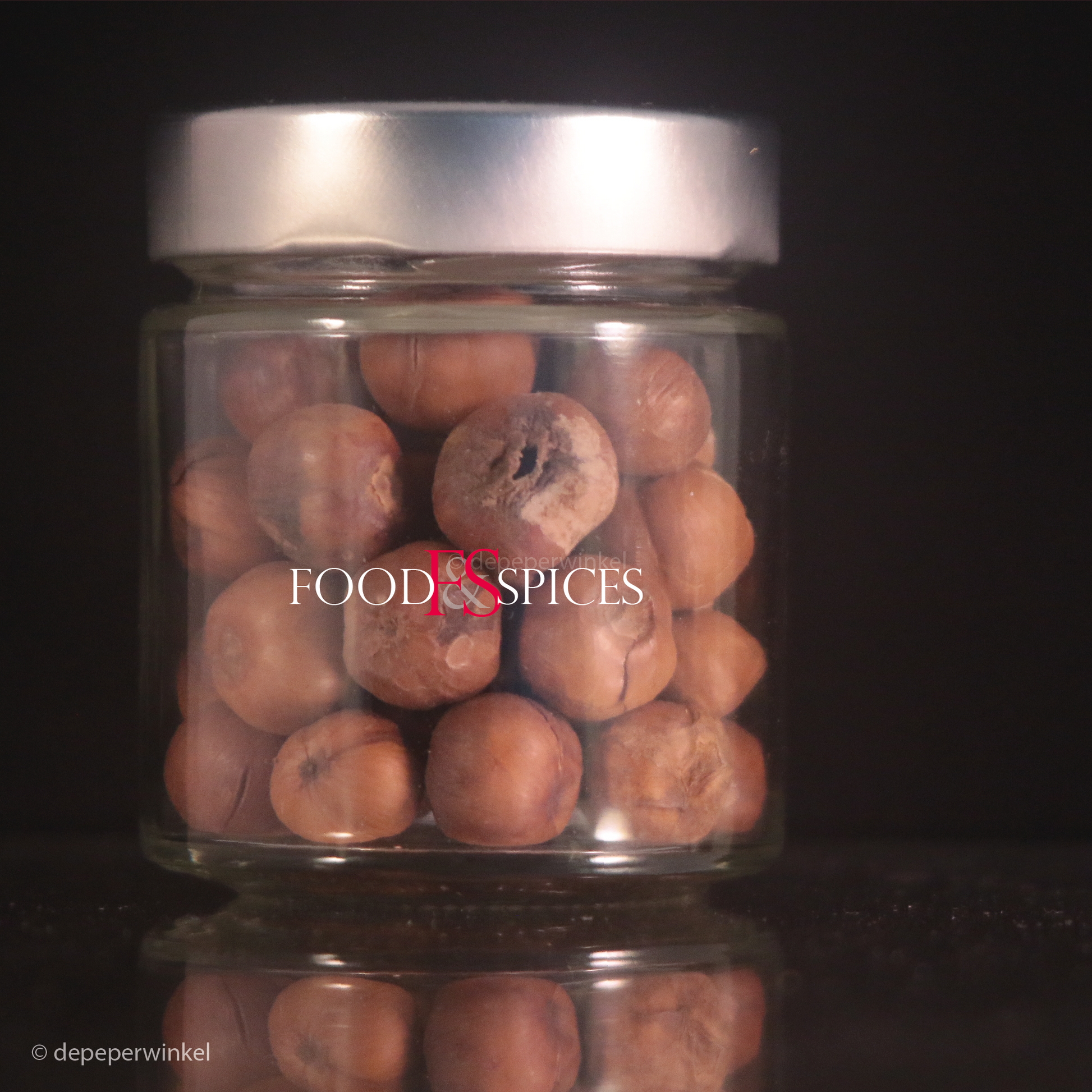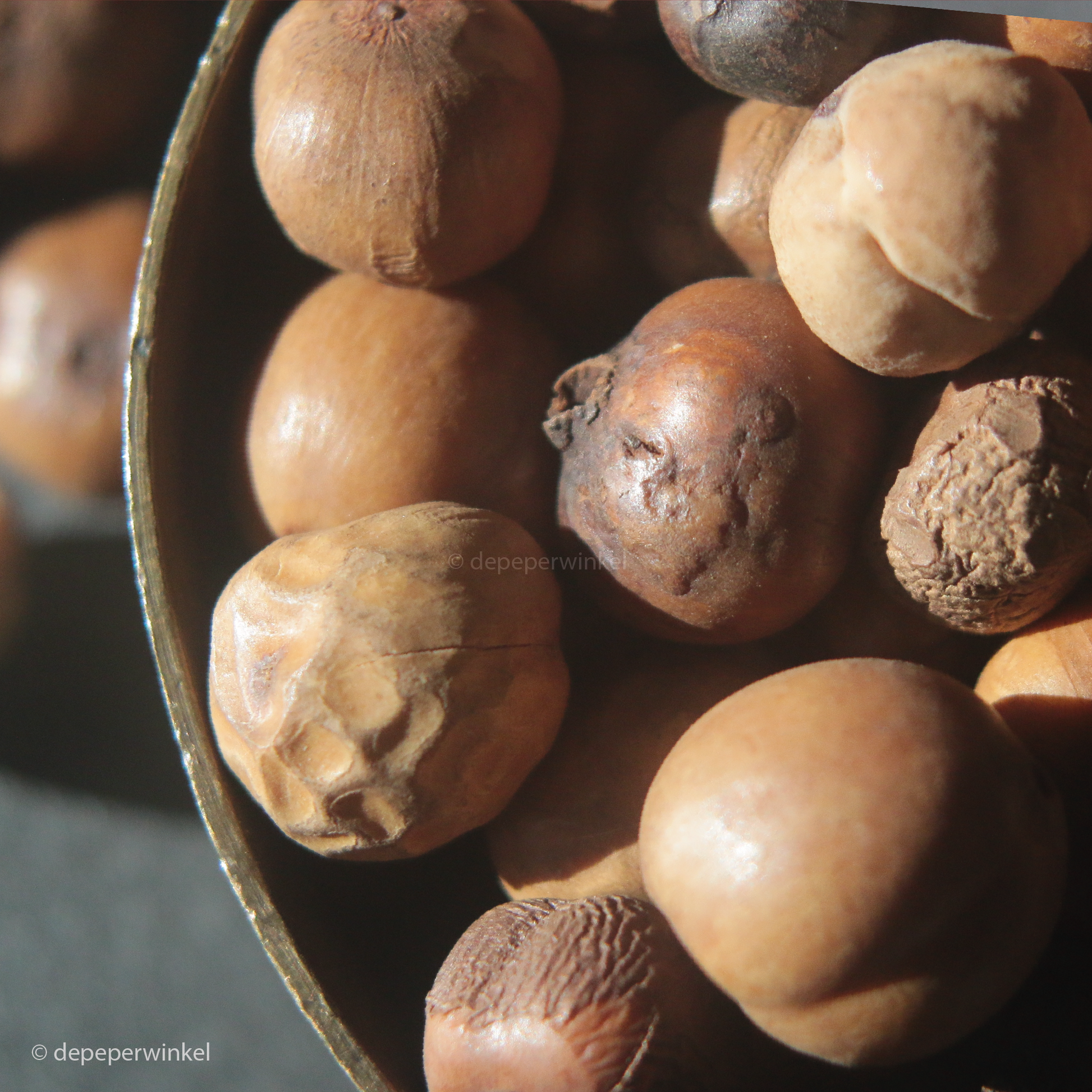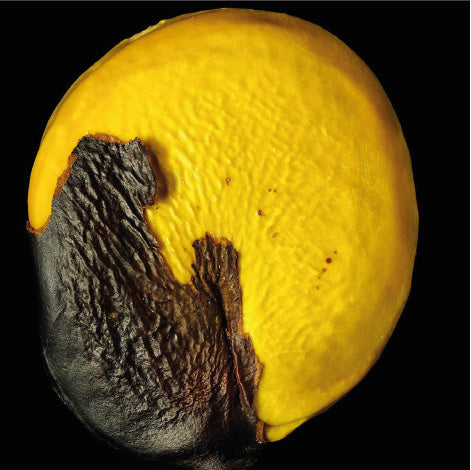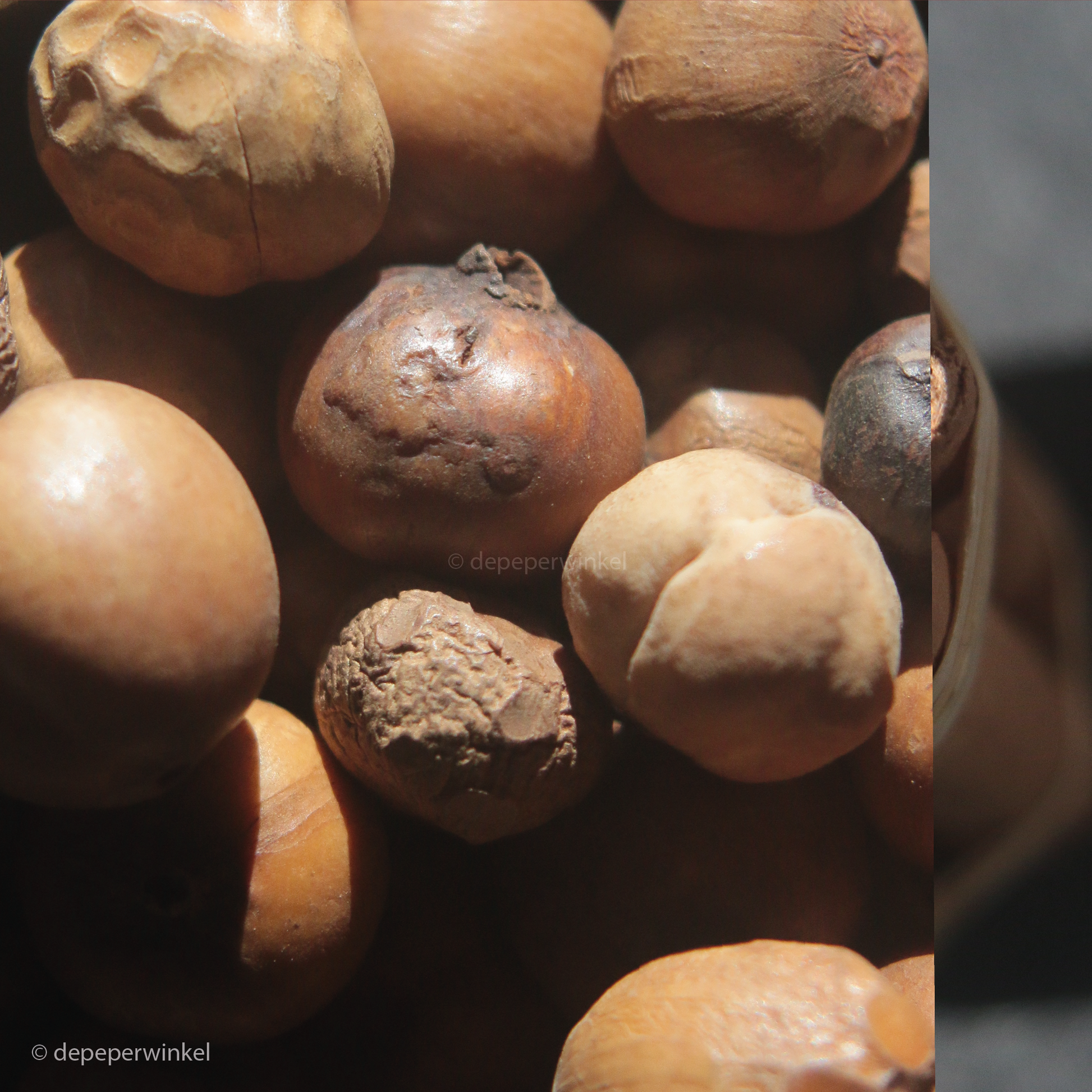FOOD&SPICES
Ngô hiômi (bobimbi)
Ngô hiômi (bobimbi)
Unable to load availability for pickup
In Africa there are fifteen 'garlic trees', plants of which sometimes all parts smell of garlic, including the bark, branches and leaves.
Ngô hiômi is no longer available.
The seeds of Scorodophloeus zenkeri (divida) and Afrostyrax lepidophyllus are especially popular in West Africa, where these plants occur naturally in the rainforest. You can also find such garlic plants outside Africa, such as the kulim tree, Scorodocarpus Borneensis, in Borneo (Indonesia).
We offer the seeds of the Afrostyrax lepidophyllus. It grows in the dense tropical rainforest of West Africa, especially in Cameroon, Congo and Nigeria, and bears fruit. These grow like beads, in strands on the tree. After drying, when all moisture-containing components have dried out, what remains is the round seed, surrounded by a parchment shell, the endocarp. This 'garlic nut' is sometimes called the 'rondelle', the French word for 'bead'.
The seeds contain the same volatile substances as garlic. They are released when the plant's defense mechanism is activated, for example when you damage the plant. Just like when sawing the wood of the divida - the wood name - an excellent furniture wood. The seeds are called ngô hiômi in the Bassa language, and are traditionally used as medicine and spice, such as in the herb mixture mbongô tchòbi used in the fish dish of the same name.
Our garlic nuts come from wild picking. Experiments are being conducted with the cultivation of this tree to protect the endangered natural population from overexploitation, but so far without success.
The fruit of Scorodophloeus zenkeri is an elongated pod with 1-2 mostly disc-shaped seeds. In addition to this, the bark of this tree is also used together with the seeds in nkui sauce, nap poh sauce and condre, a very popular goat meat dish. The bark is blackened before use.
Smell and taste
Ngo hiômi has a pleasant garlic aroma, and produces an unmissable garlic breath after eating it. This is common to all plants that are rich in marasmicin (thiosulfinate) - such as wild garlic (Tulbaghia violacea) - or allicin (diallylthiosulfinate) - such as garlic (Allium sativum). Both compounds are unstable, and - this is how the plant's defense mechanism works - break down into a complex of sulfur compounds, such as
- 2,4,5,7-tetrathiaoctane,
- 2,3,5-trithiahexane, methyl disulfide (also found in cauliflower, broccoli and camembert) and
- 2,3,4,6-tetrathiaheptane (also found in mushrooms),
The oil from the seeds of Scorodophloeus zenkeri (divida) and Afrostyrax lepidophyllus contains 91.0-96.1% sulfur compounds. The predominant compound is 2,4,5,7-tetrathiaoctane, accounting for 51.5-52.9%.
Usage
Ngô hiômi is used as a substitute for garlic in West African dishes, for example in rubs and marinades, or in nkwi, a famous very spicy soup in which ngô hiômi plays the leading role. Compared to garlic powder, the powder from the garlic tree is much more aromatic.
Ngô hiômi is used, among other things, in the spice mixture yaji, the basis for every Nigerian dry-rub (for the BBQ). Yaji is delicious, due to the combination of spices and the irreplaceable power of kuli-kuli, the basis for the rub, made from pressed peanut cake. Easy to make yourself.
How do you use the notes? Take a cloth and a nutcracker. Crack the nut in the cloth so that the chunks do not fall away.Crush the chunks in a mortar and then grind them into powder. The broken ngo hiomi can be easily rehydrated, after which you can easily grind it. If you don't like the rough work, let the nut absorb water in its entirety. Take your time, at least 24 hours.
Features
- 100% seeds of the Afrostyrax lepidophyllus
- origin: Cameroon
Assortment
- only available in glass jar, contents 60 grams
Gift packaging
- the jar is available in a tasteful gift packaging, consisting of a cube box filled with black tissue paper
- for an overview of our gift packaging, please refer to the gift packaging section
General advice
- NGO Hiomi's aromas are overwhelming and very long-lasting, even when the nuts become very dry.
- please grind ngô hiômi in advance, the scent will not be lost
Save:
- ngô hiômi is best stored in a cool place due to the low melting point of the allicin
- keep the package hermetically closed !
- this spice has no expiration date, retains its aromas almost indefinitely!
Share







